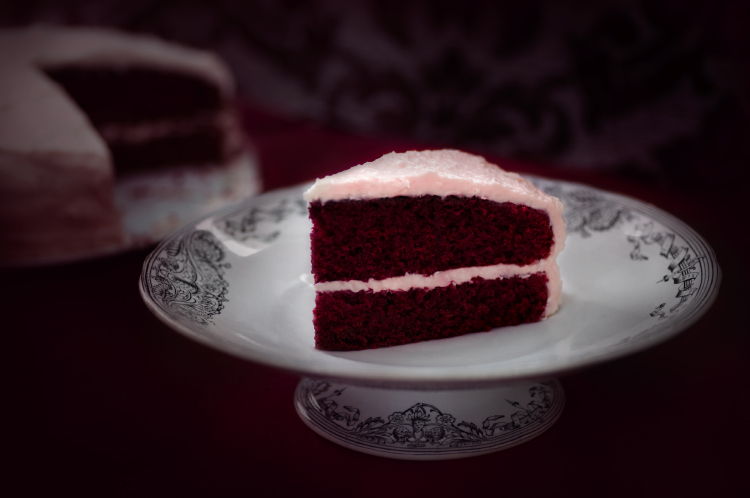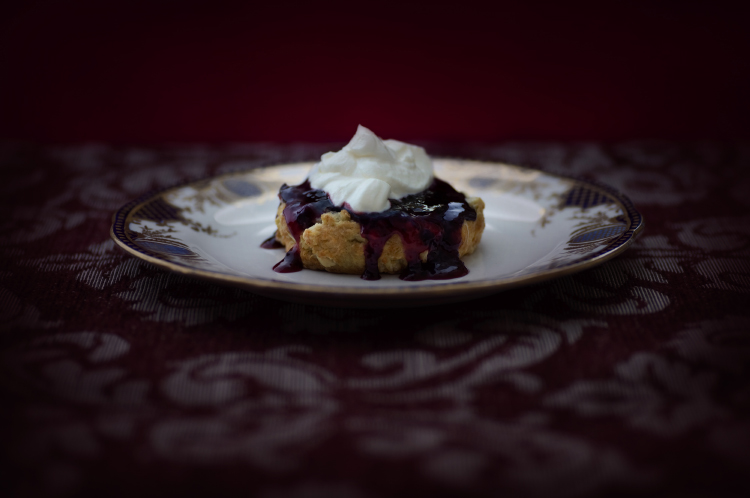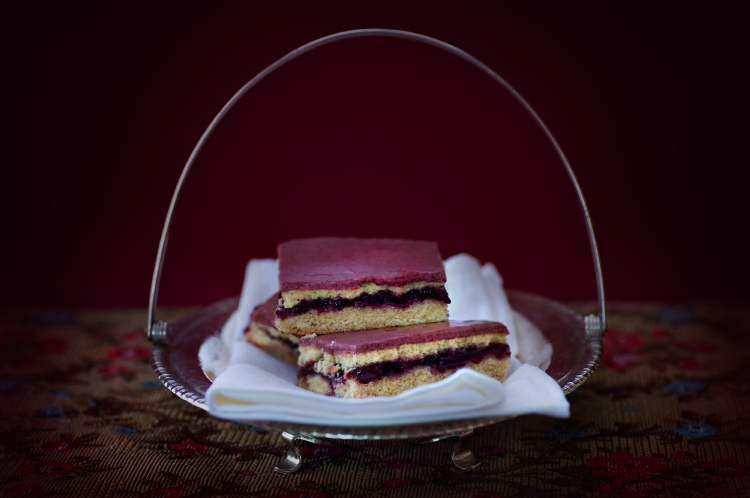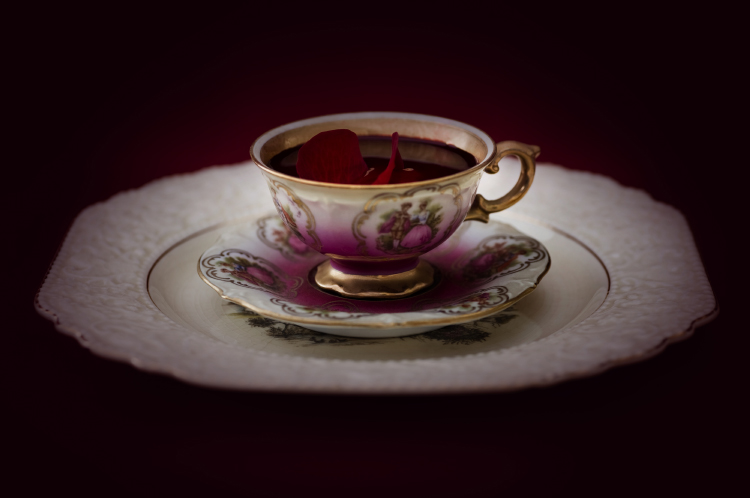Food for the Ages
Jonathan Cameron’s High Tea
DANIEL MICHAEL SATELE

JONATHAN CAMERON Blood Velvet Cake 2011 Lightjet photograph, 580 x 385 mm.
Engaging the conventions of commercial culinary photography, a genre designed to engender foodlust in its viewers, Jonathan Cameron’s High Tea series makes its bite when we learn that blood is a key ingredient of the photograph’s appetizing subjects. The evident delicacy of the dishes’ crafting and the perfection of their presentation make neat analogues for the carefulness of the set-ups of the shots and their lush, sensuous texture. By contrast, the act of hematophagy implied by these photographs connotes the primal, bestial impulses Western modernity imagines itself transcending in order to produce such artefacts of civilisation as high cuisine.
Thoroughly taboo today, one of the uncanny things about eating human blood is that, from a long-scale historical perspective, Westerners only recently gave it up, gradually abjecting the practice onto the images of the vampire and the cannibal. At least into the eighteenth century, blood was revered as the ‘King of the Humours’, thought to hold immense magical and curative power, and so employed by the physician in remedies, and by the cook as an ingredient for cakes, puddings, pastas, pies and sauces. The paramount example of blood’s power was Christ’s blood, consumed eagerly at the Eucharist. With the Enlightenment, and the West’s relinquishment of belief in witches, vampires were imagined practising a perversion of the Blessed Sacrament.
By the late twentieth century the vampire was becoming less of a stranger and more often given a voice, as in the interview staged by the Anne Rice novel inaugurating this trend. With humans more often than not becoming vampires’ lovers rather than their meals, the vampire also became a figure with whom to sympathise and identify. That recent vampires engage their blood-drinking equivocally ― both Twilight’s Edward Cullen and True Blood’s Bill Compton drink less-satisfying substitutes for human blood ― reflects our own proneness to unbeckoned desire, our ability to want things we would not choose to want, like the vampire who wants not to want to drink blood.
Human proneness to unbeckoned desire is nothing new, but it has become newly problematic in recent decades, giving rise to new vampires. Cultural historians observe that, in the Westernized world at least, we are becoming less adept at valuing dissatisfaction, narrowing our options for dealing with desire. This cultural shift is embodied in the credit card, but also marked by the change in advertisements from word-based arguments about a product’s usefulness to image-based fantasy scenes in which the product appears as a talisman of enjoyment. This hints at why the visual language of advertising becomes the one Cameron channels in his meditation on our enduring enthrallment with the vamp.

JONATHAN CAMERON White Chocolate Scone with Bloodberry Jam 2011 Lightjet photograph, 580 x 385 mm.

JONATHAN CAMERON Summer Pudding with Bloodberry Coulis 2011 Lightjet photograph, 580 x 385 mm.

JONATHAN CAMERON Bloodberry Slice 2011 Lightjet photograph, 580 x 385 mm.

JONATHAN CAMERON Blood Tea 2011 Lightjet photograph, 580 x 385 mm.
